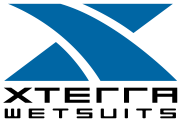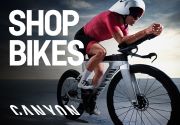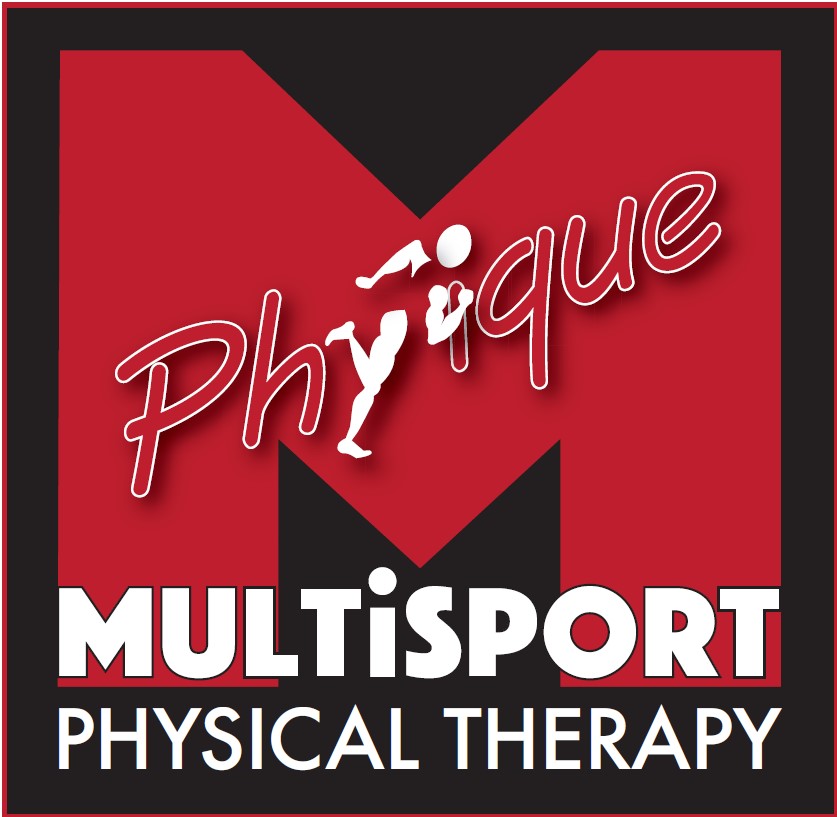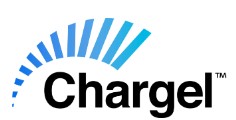Kim McDonald

I recently sat down and talked triathlon with TCSD member Kim McDonald. Kim had a fantastic Ironman Hawaii as he finished in 10:54:29. Please join me as we get to know Kim.
Craig: What was your athletic background prior to triathlons?
Kim: I was a swimmer and water polo player in high school, then played water polo at Cal. After I graduated, a group of us from Cal started doing open water swims to stay in shape and that led a few of us into doing swim-run races. That was in 1976, before triathlons. But one of the guys who used to drive down from Davis to do the races was Dave Scott, so we learned quickly what triathlons and the Ironman were all about. The Ironman didn’t have much following then and we thought Dave was insane for even wanting to do it. Friends of mine who swam on the master’s team that Dave coached in Davis told me he was so tired from his Ironman training that he couldn’t wake up to open the pool for the early morning workouts. We thought, What is he thinking? He’s gonna lose a good job for a race that won’t pay him a dime. But I guess he had the last laugh.
Craig: What was your first triathlon like?
Kim: I hung around the Bay Area for a few years, going to graduate school in biology, then worked as a reporter for a newspaper in Pleasanton. It wasn’t long before I decided journalism, not science, was what I really liked doing, so I packed up my’67 Mustang and drove to Chicago to attend Northwestern University for graduate school in journalism. No triathlons in Chicago at the time, but grad school eventually led me to a newspaper job in Washington, DC. And one of my swimming friends there heard about a triathlon starting up in Richmond, Virginia and asked me if I wanted to join him. I’d been reading about Dave Scott in the magazines and how the Ironman was getting to be all the rage, so I figured that maybe I should give one of those triathlons a try. That was in the spring of 1982. Those were the days when you just showed up with a Speedo, goggles, running shoes and a bike. I don’t remember the distances, but I do remember it was a pool swim and since they couldn’t fit all of us in the pool at once, some of us did the bike or the run before we swam. It was pretty disorganized and I didn’t have the greatest experience because I also remember having to walk my bike in my Speedo to a farmhouse in the Virginia countryside to get tools to fix the derailleur that fell off my bike. If you think walking around in Kona in a Speedo is bad, try knocking on the door of a Virginia farmhouse on a Sunday morning in one.
Craig: What lured you back to California?
Kim: It wasn’t until 1984 or 1985 that I started doing triathlons again. And it was definitely a hobby, just a few races each summer, because I traveled a lot as a newspaper reporter and worked long hours. I ended up doing well in a number of races, but I pretty much stopped doing triathlons after six or seven years because I didn’t have the time to train. By 1999, I was getting burned out with work and wanted to move back to California, so I applied for a job as the director of science communications at UC San Diego. When I came out for my interview, I remember jogging by the pool, meeting Roch Frey, who invited me to swim the next day and thinking, wow, this is great! If I worked here I could start swimming again! And not long after I started working here I even started running regularly, because my office the first year was across the street from the UCSD track. That’s where I met Terry Martin, who let me run with the groups she was coaching. I’m sure Terry thought I had some kind of eating disorder, because I got pretty motivated about training with her and ended up losing 20 pounds within the span of a few months.
Craig: How did you get back into triathlons and end up doing an Ironman?
Kim: Terry was the first one to encourage me to try an Ironman, but it never really sounded appealing. I’d seen the photos and TV coverage of people torturing themselves in the lava fields. And I was really enjoying running and seeing how much I could improve my times. But a lot of the people I was running or swimming with were triathletes and they were starting to rub off on me. When they left for Kona or some other big race I felt like I was missing out. So I pulled out my road bike three years ago, got my first real triathlon bike two years ago and got back to triathlons. I started with local swim-run races, then the local Olympic distance triathlons, then did a couple of 70.3 races. My first two attempts at the longer distance were disasters. The first one I bonked because my nutrition the entire race consisted of a single gel. I tried to correct that in my next 70.3 last November by stuffing myself with too many calories and ended up having to stop in nearly every portajohn on the run.
Craig: You qualified for Kona at Vineman 70.3. What was it like to qualify for Kona?
Kim: It was great, because this year I decided Ok, I’m going to finally try my first Ironman and maybe even qualify for Kona. I started with the California 70.3, my third 70.3 race, which went well, considering my previous two disasters, but I ended up 2nd in my age group in 4:46 and just missed the Kona spot. Two weeks later I did IM Arizona, my first Ironman, in 11:24. That was another disaster, but a real learning experience, because I learned what I needed NOT to do for my next IM! At the end of July, I did Vineman 70.3 in 4:40 and ended up 2nd again. But the guy who beat me had already qualified for Kona so I got the spot.
Craig: What can you tell people about Vineman 70.3?
Kim: It’s a competitive race and it attracts a good field of athletes, like the California 70.3. It’s also a point to point race, so some of the logistics, like having to drive to the start and find parking, can make it a real hassle. But the course itself is beautiful, especially the bike course, which takes you through a number of wineries. It’s also a good tune up for Kona, because once you get on the run course, it is blazing hot!
Craig: What was your Kona experience like?
Kim: Everything I imagined it would be. Doing the original Ironman in Hawaii had a lot of meaning because I was born and raised in Hawaii. (Not the Big Island, but Oahu and Maui). Plus I knew I could score some good local food. My uncle Morris happens to be a retired principal of the local high school in Kona and my two cousins still live there with their families. The other reason I wanted to be on the course was to support Kate Major and Mac Brown, both of whom gave me a lot of advice and encouragement over the past two years. This was their key race of the year and it was really gratifying to see them both nail it after putting in so much hard work.
I’d never been to Kona for the Ironman before, just to visit relatives. So what blew me away was how many people there I actually knew. Half the town was from San Diego and the other half from Germany and Australia. And each day was a true vacation. We swam every morning with dolphins and sea turtles, then got massages, then went riding to Hawi or running on the Queen K. My final taper run the Thursday before was the underpants run, another highlight of the trip as we all now have a different view of our training partners!
The race itself was everything I expected. Everyone who was there was in shape and prepared to put it on the line, but there was a lot of camaraderie and great sportsmanship too. I caught a few elbows in the head during the swim, but you gotta expect that with 1,700 people starting together. I also had some problems in T1 when I forgot my sunglasses and more problems coming back on the bike from Hawi when my stomach shut down and I couldn’t take in any calories, but I kept drinking water and by the time I got off the bike and on to the run course I felt great. Since this was my first Hawaii IM, my plan was to be conservative and not push in the swim, bike or run until the last 10k, when I came out of the Energy Lab. With the hot temperatures and all the people I saw walking and puking on the side of the road, I think in hindsight that was a pretty good plan. Running down Alii Drive, though, all I kept thinking of was coming back again next year and what I’m going to do different to go faster. I guess that’s how people get sucked into doing Ironmans. In some respects, I still think doing this race is sheer stupidity. But it’s the only athletic event I’ve ever done that teaches you some valuable lessons about yourself and what you can accomplish in life by just hanging in there. It’s as much a test of your mental resolve as a physical challenge because so many things go wrong over the course of the day with your body, your equipment and your nutrition. You just have to deal with whatever comes up and that gives you a lot of confidence that you can do things you didn’t think possible in other aspects of your life.
Craig: You and I got to race for Team USA at Tri Worlds in Lausanne, Switzerland in 2006. You had a great race as you finished 4th in your age group. Tell us about that race and what it is like to race Worlds.
Kim: Last year was the first time I’d done the USAT Nationals and the Worlds, so they were totally new experiences for me and I had no expectations. When I got 2nd in my age group at Nationals I was thrilled, but also a little disappointed, so I managed to talk my wife into letting me go to Switzerland to give it another shot at the Worlds. Looking back on it, that was the height of hubris and I was lucky I didn’t get my clock cleaned over there! But I figured that if I trained hard enough during the summer and really pushed myself during the race I might have a chance. On race day, I came out of the water 2nd, caught the leader in T1 and remained in second until the end of the bike, when I came out of T2 with two other guys. The three of us were running side by side for most of the 10K, when this German guy who had been surging off the front but fell back to us each time, made one big surge and didn’t come back. The other guy was the American who beat me at nationals and he was on my back breathing hard. So I made a big surge myself and dropped him on the final lap, then got passed myself in the last minute by a Canadian guy. It was the most exciting race I’d been in for sure and the US team coaches were great in really pushing me during the race, but it would have been nice to get to the podium!
Craig: In September I was doing my own century ride when your training group rode past me by the Wild Animal Park. I jumped on and joined you for about 20 miles. How much do you train with a group and how much do you train on your own?
Kim: I like to run, ride and do ocean swims with groups, because the people I train with are good fun to be with. And I admit I do tend to show up for the workouts as much to have a good laugh as for the workout itself. I’m the type who doesn’t follow a rigid training plan, so I’ll decide to do a 100-mile ride the night before sometimes if someone wants me to ride with them. That was what happened on the ride you mentioned. Most of the people I train with are faster than I am. So it can be a recipe for overtraining if I’m not careful. Sergio Borges, the UCSD triathlon coach, told me once that the best thing about San Diego is that the best triathletes in the world train here. And the worst thing about San Diego is that the best triathletes train here. Another thing I realized when I got bored out of my mind on the bike during my first Ironman was that riding in groups all the time isn’t good for racing an Ironman. So in training for Kona, I made sure to do about 7 or 8 solo 100-mile rides.
Craig: You have had great success with Aquathlons. In fact, you won your age group at the 2005 and 2006 Aquathlon World Championships. You frequently race the TCSD Aquathlons. What do you like about those events?
Kim: I love those races, because first of all I love the swim-run format and the fact that they’re so low-key and we get to relive the race again with a little party and food after. That’s what it used to be like back in the 70s when I first started getting into this sport. I only did one of those races this summer, though. After Jim McCann died, I couldn’t get motivated to do any more because, as you know, he was the one that started the aquathlons and kept them going. I do think it’s important to continue the aquathlons in the future to keep Jim’s memory alive, but this year was just not the year for me.
Craig: Ah yes, I’ll always remember that Aquathlon. I was so proud I edged you out at the finish line and Jim awarded me a huge chocolate bar! Who are your sponsors?
Kim: The best thing that’s happened to me since I started back in triathlons was getting a sponsorship from Zoot Sports. I met Brian Enge, the CEO of the company, at the Palm Springs Triathlon where I luckily had a good race and he invited me to join the team. And it was a huge boost for me because I’m always looking to tweak my gear to go faster and I’ve found that Zoot’s gear, like their Zenith wetsuit, the Speed Zoot swimskin and the new triathlon-specific racing flats I wore in Kona, has given me that extra edge in races. Plus, Eli Carlson, Mike Rouse, Karen Sing and many others at Zoot always give us great moral support at races and make their athletes feel like they’re part of their family. Brian even trains with us regularly. The other two people I want to thank are Terry Martin and Sergio Borges. Both of them gave me a lot of great advice when I made the jump to the Ironman this year and Sergio even let me train with his team when I needed to do some long bricks.
Craig Tell us about your family life and career.
Kim: My wife Kathy and I have been married for nearly 22 years and we have an 11-year-old daughter Rachel whose passion in life is playing competitive soccer. Both of them came out to Kona this year and it was a really great to have them there and experience the week with me. Kate’s brother, Michael Major, even invited Rachel to be part of the Major Support Team that went out to the Queen K the night before the race with buckets of chalk to draw signs for Kate. It was really empowering for her to see Kate come in 3rd this year because Rachel has seen Kate train this year and knows now that anything is possible if you work hard enough.
Craig: What are your future goals with triathlon?
Kim: I’m looking forward to doing the Short Course World Championships in Vancouver next June, as well as the USAT Nationals, but after my experience at Kona I really want to focus on doing better at the Ironman. So this winter I’m planning to buckle down and work on my cycling strength so that I can improve my times next year at the California 70.3 and Ironman Arizona in hopes of qualifying again for Kona.
Craig: Kim, thank you so much for sharing your story. The TCSD is lucky to have you as our friend. We wish you the very best of luck as you continue to chase down your goals.








